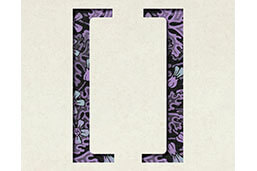
Although we use parentheses (), also called parens or round brackets, in our daily writing and academic writing, most people still struggle to utilize them correctly. They help provide additional, often nonessential, information to a sentence without disrupting the main idea. This article will cover everything you need to know about parentheses, including when and how to apply them in a sentence. If you’ve been grappling with any parentheses-related issues, this post is specifically for you.
Definition: Parentheses
Parentheses are curved punctuation marks used to enclose additional information in writing. The language rules of using parentheses are very specific and many do not know how to use them correctly. Their primary purpose is to allow the writer an opportunity to add text or comments that may serve to clarify or illustrate what they’ve written. These punctuation marks also create room for digressions or afterthoughts in writing.
Parentheses: Placement of punctuation
Since we use parentheses in writing, learning how they correlate with other punctuation in a sentence is essential.
| Punctuation | Correlation |
| Periods (.) | If the parenthetical phrase stands independently, the period is placed inside the closing parenthesis. When the parenthetical phrase occurs at the end of a larger sentence, the period is placed outside the closing parenthesis. |
| Punctuation | Correlation |
| Commas (,) | If the parenthetical phrase occurs in the middle of a sentence, the punctuation mark should be placed outside the parentheses. |
| Punctuation | Correlation |
| Question Marks (?) and Exclamation Points (!) | When a parenthetical phrase is a full sentence occurring in the middle of a larger sentence, you should not capitalize nor end with a full stop – but you can use a question or exclamation mark. |
Side-by-side parentheses
Writers use side-by-side parentheses when they need to place two or more parenthetical elements in a single sentence. The rules for using these punctuation marks vary from one academic style to the other.
| APA Style | Example |
| Use a single set of parentheses and separate parenthetical elements with a colon. | The school visited the Wild Place Project (WPP; Bristol, 2015). |
| Chicago Style | Example |
| You can use a single set of parentheses, but allows two sets of parens if the parenthetical phrase/elements are unrelated. | The school visited the Wild Place Project (WPP), (Bristol 2015) |
Nested parentheses
Writers use nested parentheses to enclose a set of parens inside another set. This can happen:
- When inserting additional information about an in-text citation
- When naming an organization in brackets followed by its abbreviations
It is good practice to use square brackets for the inner element.
It is advisable to avoid using nested parens whenever possible since it can lead to confusion about where the elements start and stop. One of the best solutions is using square brackets for the inner element (as shown in the example above) to differentiate them from the original parens. You can also rephrase the sentences to eliminate one of the parenthetical elements.
FAQs
You can use parens to enclose additional or supplemental information that clarifies a point in the sentence.
Parenthetical phrases are comments or texts that are not essential to the rest of the sentence but can help clarify a point.
Yes. Writers often use parens to cite information from external sources. So, they usually occur at the end of the sentence or right before a comma.

